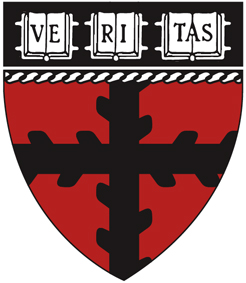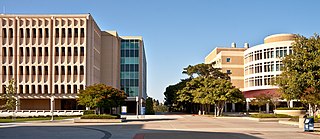Related Research Articles

An academic discipline or field of study is a branch of knowledge, taught and researched as part of higher education. A scholar's discipline is commonly defined by the university faculties and learned societies to which they belong and the academic journals in which they publish research.
The Ira A. Fulton College of Engineering represents Brigham Young University's (BYU) engineering discipline and includes departments of chemical, civil, electrical and computer, and mechanical engineering and the school of technology. The college awards about 700 degrees every year and has almost 3,600 students.

The Harvard John A. Paulson School of Engineering and Applied Sciences (SEAS) is the engineering school within Harvard University's Faculty of Arts and Sciences, offering degrees in engineering and applied sciences to graduate students admitted directly to SEAS, and to undergraduates admitted first to Harvard College. Previously the Lawrence Scientific School and then the Division of Engineering and Applied Sciences, the Paulson School assumed its current structure in 2007. David C. Parkes has been its dean since 2023.
The branches of science, also referred to as sciences, scientific fields or scientific disciplines, are commonly divided into three major groups:

The School of Physical Sciences is an academic unit of the University of California, Irvine (UCI) that conducts academic research and teaching in the field of physical sciences. It offers both pre-professional training and general education in the departments of chemistry, earth system science, mathematics, and physics and astronomy. The school enrolls 1,400 undergraduate and graduate students and is one of the top schools in the nation in the number of degrees it confers in the area of physical sciences. It also offers specializations such as biochemistry, statistics, math for economics, applied and computational mathematics, astrophysics, applied physics, biomedical physics, and education. In 1995, the school gained international prominence when Frank Sherwood Rowland, a professor in chemistry and Frederick Reines, a professor in physics, won the Nobel Prize in their respective fields. It was the first time two people won the prize in the same year in two different fields at the same public university.
The Faculty of Science and Engineering (FSE) is one of the three faculties that comprise the University of Manchester in northern England. Established in October 2004, the faculty was originally called the Faculty of Engineering and Physical Sciences. It was renamed in 2016, following the abolition of the Faculty of Life Science and the incorporation of some aspects of life sciences into the departments of Chemistry and Earth and Environmental Sciences. It is organised into 2 schools and 9 departments: Chemical Engineering and Analytical Science; Chemistry; Computer Science; Earth and Environmental Sciences; Physics and Astronomy; Electrical & Electronic Engineering; Materials; Mathematics; and Mechanical, Aerospace and Civil Engineering.

The College of Natural Science (NatSci) at Michigan State University is home to 27 departments and programs in the biological, physical and mathematical sciences.

Applied mathematics is the application of mathematical methods by different fields such as physics, engineering, medicine, biology, finance, business, computer science, and industry. Thus, applied mathematics is a combination of mathematical science and specialized knowledge. The term "applied mathematics" also describes the professional specialty in which mathematicians work on practical problems by formulating and studying mathematical models.

The Brigham Young University (BYU) College of Fine Arts and Communications (CFAC) is one of the nine colleges at the university, a private institution operated by the Church of Jesus Christ of Latter-day Saints and located in Provo, Utah. Founded in 1925, the college has grown from a small college of the arts with minimal faculty and only 100 students to the second largest college on campus.

The College of Engineering and Physical Sciences (CEPS), is one of seven faculties – referred to as “colleges” – at the University of Guelph in Ontario, Canada. CEPS operates on the University of Guelph main campus, one of four across Ontario, and has one of the largest faculty, staff, and student populations of the seven colleges at U of G.
Wayne Brockbank Hales was an American physicist, educator and academic administrator. He was president of Snow College from 1921 to 1924. He also taught at Ricks College (1916–21) and Weber College (1926–30), before joining Brigham Young University in 1930, where he remained until his retirement in 1972.

The BYU College of Life Sciences was originally named the College of Biology and Agriculture. It was formed in 1954 from the division of the College of Applied Science into this college and the College of Family Living, which was a partial predecessor of the College of Family, Home and Social Sciences. While the Agronomy; Horticulture; Animal Husbandry; Industrial Arts and Drawing; and Bacteriology programs all came from the College of Applied Science the Botany; and Zoology and Entomology programs came from the College of Arts and Sciences. Thomas L. Martin was the first dean of the College of Biology and Agriculture. In 1954 the Agricultural Economics Department was moved from the College of Commerce to the College of Biology and Agriculture.
Religious Education at Brigham Young University (BYU) administers programs related to Latter-day Saint religious teaching at the university. In the past, it has granted various master's and Doctor of Religious Education degrees. Currently its only degree programs are a Master of Arts (MA) in religious education, primarily aimed at full-time Church Educational System employees, and an MA program for military chaplains. Most students who take courses with Religious Education are studying other topics, since BYU undergraduate students have to take the equivalent of one religion course per semester.
The College of Science, Mathematics, and Technology was the science college of the former (1992-2015) University of Texas at Brownsville. It consisted of six academic departments at the time. The six departments employed diverse faculty members - many of whom are leading experts in the fields - who have received funding from a variety of funding agencies, including the National Science Foundation, the National Institutes of Health, the Department of Education, and the Department of Defense, among others. The average active ongoing external funding is about 25-30 million dollars. In 2002, the Center for Gravitational Wave Astronomy (CGWA) research center was founded to help "develop excellence in research and education in areas related to gravitational wave astronomy."

The College of Science at the University of Utah is an academic college of the University of Utah in Salt Lake City, Utah. The college offers undergraduate and graduate degrees in atmospheric science, biology, chemistry, geology and geophysics, mathematics, metallurgical engineering, mining engineering and physics and astronomy.
The William J. and John F.Kennedy College of Sciences at the University of Massachusetts Lowell is so named for the Kennedy family and their contributions to the campus. John F. Kennedy is an alumnus of the Lowell Technological Institute Class of 1970. The Lowell Technological Institute merged with the Lowell State College to become the University of Lowell in 1972. It joined the UMass system in 1991 to become UMass Lowell.

Denise C. Nuttall Stephens is an associate professor of astronomy in the College of Physical and Mathematical Sciences in the Department of Physics and Astronomy at Brigham Young University.

The David O. McKay School of Education (SOE) at Brigham Young University (BYU) specializes in teaching, administration, communication disorders, and educational inquiry. It is located in three buildings on BYU's campus in Provo, Utah, the David O. McKay Building, the John Taylor Building, and the George Albert Smith Fieldhouse. It was ranked number 84 in the United States for best education schools for 2021.
BYU Center for Animation is an American animation school at Brigham Young University (BYU). The program is a leading university animation program in the United States and has collected 11 student Emmys.
References
- ↑ Ernest L. Wilkinson and W. Cleon Skousen, Brigham Young University: a school of destiny, Brigham Young University Press, 1976, pp. 775, 788
- ↑ https://science.byu.edu/new-name
- ↑ BYU Physics Department website
- ↑ article on BYU training of science educators
- ↑ "A look at BYU's animation center", LDS Living , Utah, 16 August 2010. Retrieved on 5 August 2019.
- ↑ Hampton's obituary